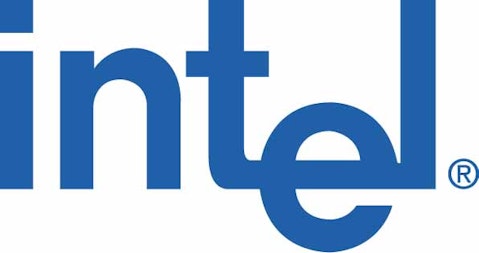Intel Corporation (NASDAQ:INTC) has been ahead in computing performance lately, but its relatively weaker integrated graphics have left consumers wanting for more. Advanced Micro Devices, Inc. (NYSE:AMD) Trinity platform did give ample graphics processing power, but the trade-off was lower processing power. However, a lot has happened over the last year, and both Intel Corporation (NASDAQ:INTC) and AMD are looking to shake things up.

Ultrabook growth
AMD recently refreshed its Trinity lineup with the launch of Richland APUs. Although there isn’t an architectural improvement, Richland APUs have been incorporated with around 10% faster CPUs and 4-7% faster GPUs (as compared to Piledriver). Its 3D mark scores have been reported to be around 50% better than top tier Ivy bridge CPUs, and are much cheaper than Intel Corporation (NASDAQ:INTC)’s counterparts. As per the preliminary benchmarks, Intel’s upcoming Haswell has disappointed the Street with an 18%-20% boost in graphical performance over its predecessor. But Intel hasn’t lost yet.
Haswell mobile processors are more inclined towards low power consumption with TDPs (Thermal Design Power) as low as 7W, making them more practical for ultrabook deployments. Although Advanced Micro Devices, Inc. (NYSE:AMD)s APUs deliver balanced performance, they are more suitable for laptops, while Intel’s Haswell is targeted towards ultrabooks (and laptops).
Advanced Micro Devices, Inc. (NYSE:AMD) Richland APUs are reported to have 35W TDP, which is way more than Intel’s 7W. Furthermore, Haswell’s idle power consumption is estimated to be 20 times lower than Ivy bridge’s power consumption, which further enhances the battery life of notebooks and ultrabooks. This clearly puts Intel ahead, especially since ultrabooks are expected to grow at 60% plus annually, which is a significantly higher rate than laptops.
Smartphone growth
Intel Corporation (NASDAQ:INTC) has been incorporating crystals with higher clock speeds, and providing tough competition to QUALCOMM, Inc. (NASDAQ:QCOM) Snapdragon and NVIDIA Corporation (NASDAQ:NVDA)‘s Tegra 3 in terms of pure processing power last year. This year, QUALCOMM, Inc. (NASDAQ:QCOM) and NVIDIA Corporation (NASDAQ:NVDA) launched Snapdragon 800 and Tegra 4 which are capable of rendering 4k, beating Intel’s offerings (Medfield). But the most commonly ignored fact is that Intel’s mobile offerings are way cheaper than its Qualcomm and NVIDIA counterparts, and are currently being deployed by less favored brands.
Furthermore, Intel’s Atom Z2760 is a dual core processor clocked at 1.8GHz, while NVIDIA Corporation (NASDAQ:NVDA)’s Tegra 4 is a quad core processor clocked at 1.9GHz. Even Qualcomm’s Snapdragon 800 is a quad core processor clocked at 2.3GHz, and the specs suggest that the QUALCOMM, Inc. (NASDAQ:QCOM) and NVIDIA chips don’t really compete with Intel’s atom processors.
To get ahead in the processing race, Intel Corporation (NASDAQ:INTC) is launching Clover Trail +, which offers a dual core platform with multi-threading technology. It is bringing its expertise from the PC segment to the world of smartphones. According to the leaked benchmarks of Lenovo K900, Intel’s Z2580 processor has outperformed Samsung Galaxy S4’s Exynos 5.

Over the shorter term, I don’t think Intel is a threat to Qualcomm or NVIDIA since its being equipped in less favored brands. But as Intel grasps greater market share, its upcoming Bay Trail processors could have a chance to dislodge its larger peers. For now, I think Intel is off to a great start, especially since the smartphone industry is expected to grow at a 40% plus rate in FY13.
At the current prices, shares of NVIDIA, Qualcomm, and Intel Corporation (NASDAQ:INTC) trade at forward earnings multiples of 16x, 13.5x, and 10.5x respectively.
Tablet industry
The tablet industry is also growing rapidly, and shipments are expected to grow 48.7% in FY13. That a massive growth estimate and Intel seems well poised to take advantage of the growth opportunities. Intel’s Atom processors are being deployed in tablets, especially Windows-based, bringing tablets at par with the performance of low end laptops and ultrabooks. Since most of the Windows-based applications are already tuned to take full advantage of Intel’s multi-threaded cores, I think Intel would be one of the prime beneficiaries from the growth of the tablet industry.
Although Intel has low powered processors for micro servers as well, I don’t think that it could contribute to Intel’s turnaround. However, it would be interesting to see how Intel Corporation (NASDAQ:INTC) can incorporate its upcoming 14nm manufacturing process into its low powered processors, while still being ahead in computing performance. That said, I think Intel is making positive strides, and its triggers suggest that Intel could’ve bottomed out. I think Intel deserves a Buy, rating and investors should keep a close eye on the upcoming Intel Developer Forum at Beijing. And of course, Intel is not for the risk averse.
Piyush Arora has no position in any stocks mentioned. The Motley Fool recommends Intel and NVIDIA. The Motley Fool owns shares of Intel and Qualcomm.

